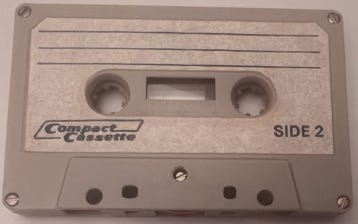Emanuel Derman | September 4, 2024
The Mother’s Voice Edition
On aural images, sending cassettes, and space vs. time.
Emanuel Derman (ED) started off with WITI with the excellent Japan edition. He grew up in Cape Town, South Africa, and came to Columbia University in New York to study for a PhD in physics. His memoir of a youth in apartheid South Africa, ‘Brief Hours and Weeks: My Life as a Capetonian’, will be published towards the end of the year.
Emanuel here. My mother died in Cape Town, South Africa, about 45 years ago, at a time in the history of telecommunications when you could not yet make casual phone calls to South Africa from New York. In and before those days, in order to speak for three minutes, at great cost, you had to book a phone call for a certain time on a certain day. The viscosity was daunting and prohibitive.
Therefore, in the years between when I left Cape Town and when she died, we wrote frequent letters and aerogrammes. The round trip for a letter was about ten days. In order to do better, in quality but not in speed, we also recorded cassette tapes to each other, about ten minutes long, and exchanged those. Soon, all my close family there — mother, father, sisters, nephews, nieces — and even some of my friends, adopted the same cassette strategy.
A few weeks ago I uncovered a box of some of the 50-year-old tapes she sent, and began to play them on a small cheap cassette recorder I bought.
Why is this Interesting?
I don’t have only tapes from those days; what I also have in profusion are old photos and even some silent 8mm movies. And I also have memory.
In my mind’s eye I have a visual image of each of my parents, and that image corresponds well to the photos and movies. In my mind’s ear I have some sort of aural image of their voices, but until now I’ve never compared it to the original. 1 What turns out to be unexpectedly astonishing is the mismatch between my recollection of my mother’s voice and what it actually sounded like. It was not the way I remembered.
My mother’s voice on the tape was animated and lively, but her tone and accent (Polish-and-Yiddish-inflected English) differed a lot from what I recalled. At first I thought it might be the effect of the ancient cassette and the cheap recorder, but no. I had a benchmark: one of my sisters was also on the tapes and she sounded authentic. And it’s not just me. My niece and nephew, to whom I sent the tape after digitizing it, listened to their long-deceased father on it and were stunned at how unfamiliar he sounded.
Why the difference between recalling a visual vs. an aural image? A photo can be represented by a sequence of pixels arranged in space. A recording can be represented by “pixels” sequenced through time. Yet, memory images handle space better than time. This must have something to do with the nature of time itself. Physics treats time as just another coordinate to locate events, similar to the other three spatial coordinates that together characterize four-dimensional space-time. Physics “spatializes” time, for example as the location of the shadow on a sundial. But we can move through space at our discretion. Time, even psychological time — except for brief transcendent moments when it stops — progresses uncontrollably. It doesn’t feel like the other three coordinates, and memory seems to confirm this.
1 There doesn’t seem to be a single word for an aural image, illustrating the psychological dominance of vision and space over sound and time. (ED)
—
Thanks for reading,
Noah (NRB) & Colin (CJN) & Emanuel (ED)
—
Why is this interesting? is a daily email from Noah Brier & Colin Nagy (and friends!) with editing help from Louis Cheslaw about interesting things. If you’ve enjoyed this edition, please consider forwarding it to a friend. If you’re reading it for the first time, consider subscribing.
